【往期回顾】
【本期内容】
History of Cutty Sark
卡蒂萨克号帆船的历史

Facts and figures about Cutty Sark
速览:关于卡蒂萨克号的事实和数据
Cutty Sark cost £16,150 when it was first built.卡蒂萨克号最初建造时耗资16150英镑。If all the sails were out, they would measure 32,000 square feet in total.如果所有的帆都展开,它们的总面积将达到32000平方英尺。There are 11 miles of rigging altogether.总共有长达11英里的索具。The main mast is 153 feet high.主桅高153英尺。The hull was sheathed in a copper and zinc alloy. This was to prevent things like barnacles and molluscs from burrowing into the ship.船体覆盖着铜锌合金。这是为了防止藤壶和软体动物之类的东西钻入船内。Cutty Sark was opened twice by Queen Elizabeth II: once in 1957, and again for its reopening in 2012.英国女王伊丽莎白二世曾两次开放卡蒂萨克号:一次在1957年,另一次在2012年重新开放。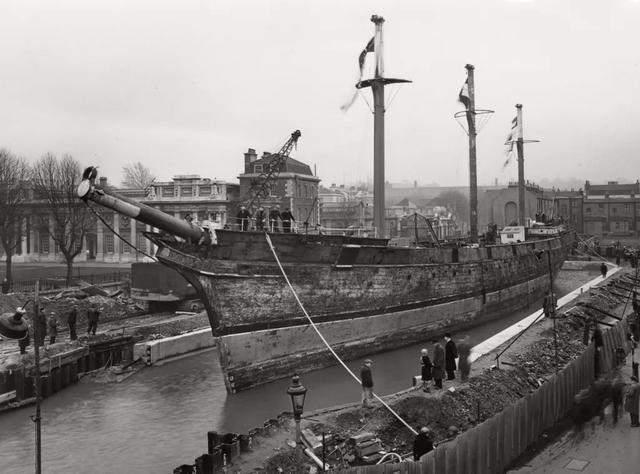
Why was Cutty Sark built?
为什么建造卡蒂萨克?
Cutty Sark was built exclusively for the China tea trade. Tea had been enjoyed in Asia for centuries, but it did not reach Britain until the 1650s.
卡蒂萨克号帆船是专门为中国茶叶贸易而建造的。茶在亚洲已经流行了几个世纪,但直到十七世纪五十年代才传到英国。
Initially hailed for its medicinal qualities, tea was mainly enjoyed by the wealthy. But thanks, in part, to an extensive smuggling network, its popularity exploded. Tea taxes were slashed to end the smuggling, and by the early 19th century working families were consuming it twice daily. It was also huge business, with over 28 million kilograms imported in 1869 alone.
茶最初因其药用特点而备受赞誉,主要由富人享用。但在一定程度上受益于广泛的走私网络,它的受欢迎程度激增。为了结束走私,茶税被大幅削减,到19世纪初,工薪家庭每天会喝两次茶。这也是一项巨额生意,仅1869年就进口了2800多万公斤茶叶。
A fashion developed among Victorians for consuming the first tea to be unloaded in London. This spurred the ‘great tea races’ and a spirit of intense competition: get home first and you could command huge prices. That's why, as a clipper ship, Cutty Sark was designed to be fast.
在维多利亚时代流行起了一种时尚,就是饮用到达伦敦的第一杯茶。这促成了“运茶大竞赛”以及激烈竞争的势头:谁先运回茶叶,谁就可以高价出售。这就是为什么作为一艘快速帆船的卡蒂萨克号的航行速度被设计得很快。
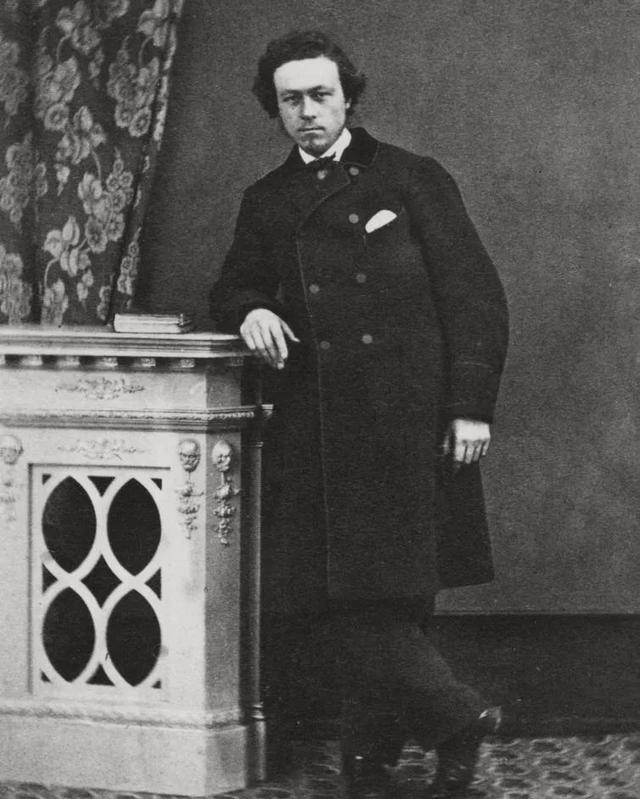
When was Cutty Sark built?
卡蒂萨克号是什么时候建造的?
Cutty Sark was built in Dumbarton, Scotland in 1869. Its owner John ‘Jock’ Willis, designer Hercules Linton and many of its crew members over the years were from Scotland. But despite its proud Scottish heritage, London was to be Cutty Sark’s home port.
卡蒂萨克号于1869年在苏格兰的敦巴顿建造。它的主人约翰·‘乔克’·威利斯、设计师赫拉克勒斯·林顿和多年来的许多船员都来自苏格兰。尽管它有着引以为豪的苏格兰基因,但伦敦却将成为它的母港。
On its maiden voyage, the ship departed London on 15 February 1870, bound for Shanghai.
1870年2月15日,该船首航时离开伦敦,前往上海。
On this outward voyage the ship carried a general cargo, including wine, spirits and beer and manufactured goods. After successfully reaching China on 31 May, the ship was loaded with 1,305,812 lbs of tea. After only 25 days in port in Shanghai the ship sped back to London, arriving on 13 October the same year.
在这次出航中,船上载有一般货物,包括葡萄酒、烈酒、啤酒和制成品。在5月31日成功抵达中国后,该船装载了1305812磅茶叶。在上海港口停留仅25天后,该船便迅速返回伦敦,于同年10月13日抵达。
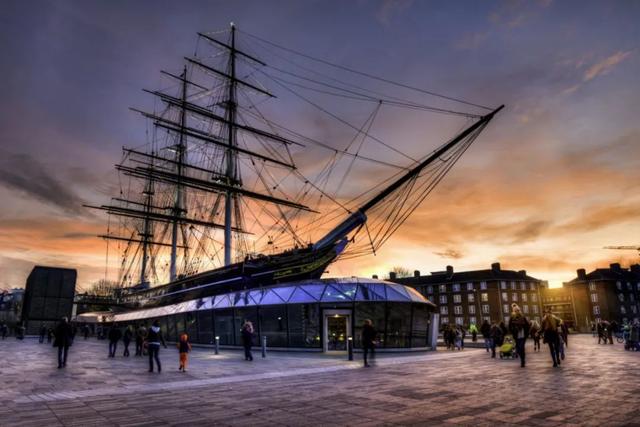
Opium wars and the tea trade
鸦片战争与茶叶贸易
The East India Company was established in 1600 and given a monopoly on all trade in the East. They bought Chinese goods such as silk, porcelain and tea for silver.
东印度公司成立于1600年,垄断了东部的所有贸易。他们用白银购买了丝绸、瓷器和茶叶等中国商品。
But the Chinese were largely uninterested in British goods. This caused an ‘imbalance’ the Company felt could not be sustained. They had to find a way to recoup the silver. The Company decided to grow opium in India for merchants to illegally sell on to Chinese smugglers for silver.
但中国人在很大程度上对英国商品不感兴趣。这导致了公司认为无法承受的“失衡”。他们必须想办法赚回这些银子。于是公司决定在印度种植鸦片,供商人非法向中国走私者出售,换取白银。

Why did Cutty Sark stop trading tea?
为什么卡蒂萨克号停止了茶叶交易?
Cutty Sark’s tea career was cut short by the Suez Canal.
卡蒂萨克号的茶运生意因苏伊士运河而被迫中断。
Opened in the same week as Cutty Sark was launched, the canal cut the voyage out to China by over 3,000 miles. Instead of sailing all the way around the continent of Africa, ships could now simply sail through the Mediterranean Sea and the canal to reach the Indian Ocean.
这条运河在卡蒂萨克号下水的同一周开通,将通往中国的航程缩短了3000多英里。船只现在可以仅仅穿过地中海和运河到达印度洋,而无需一路绕过非洲大陆。
But it was not a practical option for sailing ships like Cutty Sark. There were challenging wind conditions in the Mediterranean and canal, and there were expensive tolls to contend with.
但对于像卡蒂萨克号这样的帆船来说,这不是一个切实可行的选择。地中海和运河的风力条件很有挑战性,而且需要支付昂贵的通行费。
Instead, steamships could now take advantage of this ‘short cut’ to load greater amounts of tea and return to London at least ten days earlier than Cutty Sark could hope for. After just eight voyages, Cutty Sark was forced out of the trade for which it had been built.
相反,蒸汽船现在可以利用这条“捷径”装载更多的茶,并比卡蒂萨克号所希望的至少提前十天的时间返回伦敦。仅仅航行了八次,卡蒂萨克号就被迫退出了当初为了建造它的贸易。

What records did Cutty Sark break?
卡蒂萨克号打破了哪些记录?
After abandoning the tea trade, Cutty Sark entered the Australian wool trade in 1883. The ship made it back to London at least 25 days before any of its competitors, marking the beginning of its most successful period.
放弃茶叶贸易后,卡蒂萨克好于1883年加入了澳大利亚羊毛贸易。该船比任何竞争对手至少提前25天返回伦敦,标志着其最成功时期的开始。
Two years later, Richard Woodget became the Captain of the ship. In his ten-year service, he mastered getting the most from his ship and men. In 1886, he brought the ship back from Sydney to London in a record-breaking 73 days.
两年后,理查德·伍德杰成为了这艘船的船长。在他十年的职业生涯中,他掌握了从船上和船员身上获得最大利益的方法。1886年,他以破纪录的73天时间将这艘船从悉尼带回伦敦。
In order to catch the 'Roaring Forties' trade winds around Cape Horn, Captain Woodget pushed further south than previous commanders. This meant the ship encountered icebergs and violent gales and seas. But it also meant winds which could propel the ship home.
为了赶上合恩角区域的“咆哮的四十年代的贸易巨风”,伍德杰船长比以前的指挥官更往南推进。这意味着这艘船遇到了冰山和狂风巨浪。但这也意味着风可以推动船只回家。
Woodget took up photography in these years, leaving us with an invaluable record of life on board Cutty Sark.
伍德杰船长在这些年拍了很多照片,给我们留下了关于卡蒂萨克号上生活的宝贵记录。
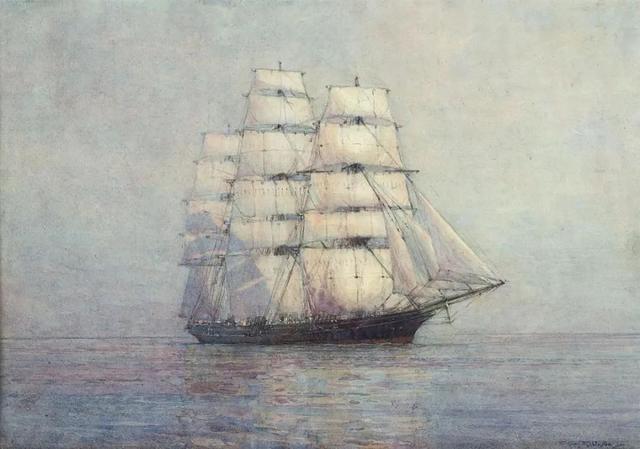
What happened to Cutty Sark?
卡蒂萨克号后来怎么了?
In the 1890s Cutty Sark began to make less money, as more steam ships moved into the wool trade. Eventually the ship was sold to a Portuguese firm and renamed Ferreira. It was used as a general cargo ship, transporting goods between Portugal and its empire.
19世纪90年代,随着越来越多的蒸汽船进入羊毛贸易,卡蒂萨克号赚的钱开始变得越来越少了。最终,这艘船被卖给了一家葡萄牙公司,并更名为费雷拉号。它被用作普通货船,在葡萄牙与其帝国之间运输货物。
When Portugal declared war on Germany, the ship had to contend with unrestricted submarine warfare. Despite surviving this unscathed, by the 1920s the ship was in poor condition and unlikely to survive much longer.
当葡萄牙向德国宣战时,该舰不得不应对无限制的潜艇战。尽管毫发无损,但到了20世纪20年代,这艘船的状况不佳,不太可能航行更长时间了。
After suffering damage during bad weather, the ship experienced astonishing good luck. Brought to Falmouth for repairs, it was spotted and recognised by local retired sea captain Wilfred Dowman. Determined to save the ship and restore it to former glory, he offered to buy it for £3,500 – more than what the ship was worth even in 1895.
在恶劣天气中受损后,这艘船却是好运惊人。它被带到法尔茅斯进行维修,被当地退休船长威尔弗雷德·道曼发现并认出。他决心拯救这艘船并使其恢复昔日的辉煌,他提出以3500英镑的价格买下这艘船,甚至比1895年这艘船的价值还要高。
The old name was restored in 1923, and Cutty Sark returned to British ownership.
1923年恢复了原来的名称,卡蒂萨克号重新归英国所有。
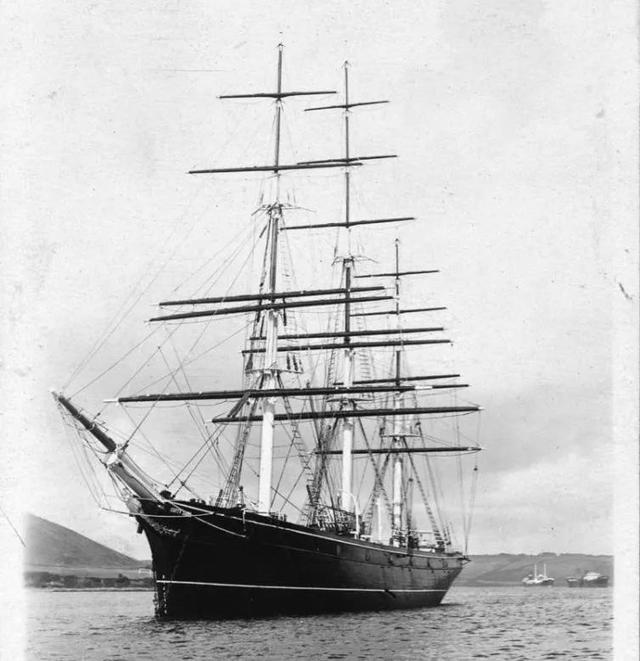
Cutty Sark's first restoration
卡蒂萨克号的第一次修复
With the help and support of his wife Catharine, Wilfred Dowman attempted to restore Cutty Sark to its 1870 appearance. In 1924, they reopened the ship in their home town of Falmouth as a cadet training ship and visitor attraction. Its days as a cargo ship were over.
在妻子凯瑟琳的帮助和支持下,威尔弗雷德·道曼试图将卡蒂萨克号恢复到1870年的样子。1924年,他们在家乡法尔茅斯重新开放了这艘船,作为学员训练船和游客景点。而它作为货船的日子就此结束了。
When Dowman died, Catharine gifted the ship to the Incorporated Thames Nautical College at Greenhithe, where it continued to be used as a cadet training ship until the end of the Second World War.
道曼去世后,凯瑟琳将这艘船赠送给了位于格林希特的泰晤士航海学院,在那里它一直被用作学员训练船,直到第二次世界大战结束。
In the post-war period, it was no longer needed as a training ship and fell into disrepair. The Cutty Sark Preservation Society was formed in order to secure its future. Once again, public support would ensure its survival.
在战后时期,它不再需要作为训练船,而且也年久失修了。为了确保其未来,卡蒂萨克号保护协会因此成立了。公众的支持将再次确保其存立于世。
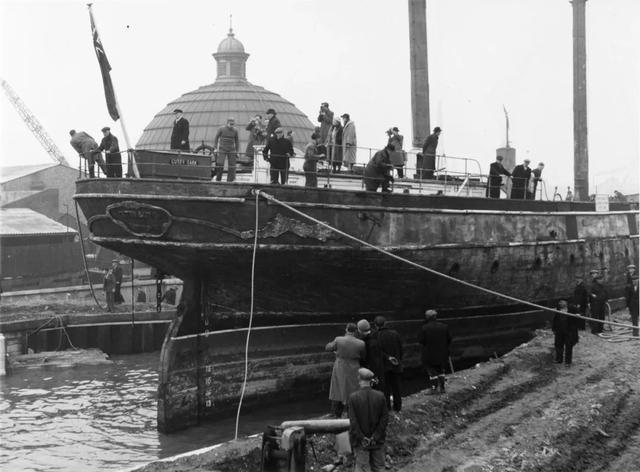
When did Cutty Sark come to Greenwich?
卡蒂萨克号是什么时候来到格林威治的?
In the 1950s Frank Carr, Director of the National Maritime Museum, formed the Cutty Sark Preservation Society. Having engaged the support of HRH The Duke of Edinburgh, the Society managed to raise public funds for a restoration and secured a new home for Cutty Sark.
20世纪50年代,英国国家海事博物馆馆长弗兰克·卡尔成立了卡蒂萨克号保护协会。在爱丁堡公爵殿下的支持下,该协会设法筹集到公共资金进行修复,并为卡蒂萨克好找到了新家。
In 1954 the ship was towed into a specially built dry dock in Greenwich (pictured). Extensive restoration work followed, and Cutty Sark was finally reopened to the public in 1957.
1954年,这艘船被拖进格林威治一个专门建造的干船坞里。随后进行了大规模的修复工作,卡蒂萨克号最终于1957年重新向公众开放。
After more than 40 years as a museum ship, Cutty Sark was once again in need of extensive restoration. In 2006 a project to preserve its original fabric for the future began.
卡蒂萨克号作为博物馆用船展出了40多年后,再次需要进行大规模的修复。2006年,一个为保留其原始结构、存其未来的工程开始了。
The following year, however, a devastating fire ripped through all three decks of the ship. Thanks to an outpouring of public support and the Heritage Lottery Fund, the ship was once again saved, restored and reopened in 2012.
然而,第二年,一场毁灭性的大火烧毁了这艘船的所有三层甲板。多亏公众和文化遗产彩票基金的大力支持,该船于2012年再次获救、修复并重新开放。

【Source】www.rmg.co.uk
【Translated by】Spark Liao (廖怀宝)
【Illustration】From Bing
请点击,查看更多原文信息。
